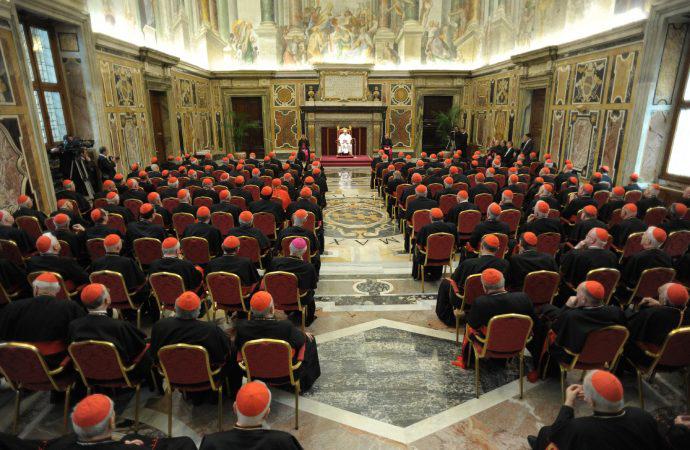|
Reality of the abuse scandals now seems A Tale of Two Cardinals
By John L. Allen Jr.
Over the last three years, sexual abuse charges against two high-profile and massively influential cardinals have rocked the Catholic Church, and now, seemingly, both stories have reached their conclusions. George Pell is a free man, while Theodore McCarrick is defrocked and exposed as a cunning manipulator able to hoodwink three papacies until his string finally ran out. The McCarrick and Pell sagas contain two unavoidable truths about the clerical abuse scandals, and they must always be held together: Every accusation of abuse has to be taken seriously, but the mere fact of an allegation doesn’t make it true. To put the point differently, McCarrick illustrates the risks of clericalism in blinding an entire system to clear warning signs and sincere attempts to blow the whistle; Pell illustrates the risks of anti-clericalism in allowing implausible charges to go to trial and cost a man 400 days behind bars before being finally dismissed. Clericalism and anti-clericalism are two sides of the same prejudicial coin, and both are toxic in getting to the truth. Over and over again, the Vatican’s recent McCarrick report illustrates that at key moments, senior officials were warned that something was amiss with McCarrick, that reports and charges from serious people needed to be considered. Each time, a Vatican official essentially disregarded the testimony of lay people, priests and religious, and based decisions exclusively on the counsel of other bishops. In 1994, a Sister of Mercy named Mother Mary Quentin Sheridan informed the papal ambassador of charges against McCarrick; in 1999, Cardinal John O’Connor of New York did the same. Both Quentin and O’Connor suggested individuals from whom Vatican officials could get more information, yet either those individuals were never contacted or their contribution was dismissed. (In Quentin’s case, the apostolic nuncio at the time, then-Archbishop Agostino Cacciavillan, actually concluded she had come forward because “she wanted to make herself appear important,” which is about as bald a synthesis of the clericalist mindset as you’re ever likely to see in print.) Looking back, had those whistle-blowers and others been taken seriously, victims would have received justice much sooner and the Church could have been spared unimaginable heartache. In the Pell story too, there were clear warning signs early on that something was amiss, only in this instance it was with the nature of the allegation and the prosecution case built upon it. From the beginning, people who understand the dynamics of a busy cathedral on a Sunday morning, as well as how archbishops are vested and what they do at such times, found the claims against Pell incredible. For the charges to be true, Pell would have to have broken off from a liturgical procession without anyone following him, entered a bustling sacristy to find it empty except for two choirboys, proceeded brazenly despite the fact the sacristy is open and visible to anyone who passes by, performed a sexual act which his vestments essentially would have rendered physically impossible, and then returned to the exterior of the cathedral to greet worshippers as if nothing had happened. It’s not that a cardinal is incapable of committing such monstrous crimes – the McCarrick story, among others, lays waste to that fantasy. It’s rather that the charges against Pell simply never passed the smell test, and eventually collapsed under their own weight when the High Court found that “the jury, acting rationally on the whole of the evidence, ought to have entertained a doubt as to [Pell’s] guilt.” The reason such an implausible accusation got as far as it did, including Pell spending more than 400 days in prison, likely is to be located not in the evidence but in the psychology of police and prosecutors. They seemed predisposed to believe Pell was guilty, and to assume that anyone in the Catholic world who pointed to practical difficulties in the case was either willfully ignorant or, worse, in on the cover-up. In the end, neither clericalism nor its alter ego, anti-clericalism, serve the interests of abuse victims. Indeed, they actually revictimize those who have suffered abuse by turning their tragedy into a political weapon, exploiting it either to defend the Church or to grind axes against it. In both cases, prejudice overrides truth and good judgment. Taking full stock of that reality requires holding the lessons of McCarrick and of Pell together; focusing on one without the other is to have the yin but not the yang. Of course there’s a grand irony, which is that neither McCarrick nor Pell probably would be terribly happy to see their stories conjoined like this. At their peaks, the 90-year-old McCarrick was a lion of the liberal wing of the Church, while the 79-year-old Pell is a strong conservative with little use for the brand of culturally accommodating Catholicism he felt McCarrick represented. Yet now these two men, who probably were tempted at times to see their competing trajectories in Catholicism as a binary either/or choice, are now forever linked in a great both/and truth of the abuse scandals: Take every charge seriously, but take the defense seriously too. That, it seems, is the ultimate take-away from the Church’s improbable Tale of Two Cardinals.
|
.
Any original material on these pages is copyright © BishopAccountability.org 2004. Reproduce freely with attribution.
